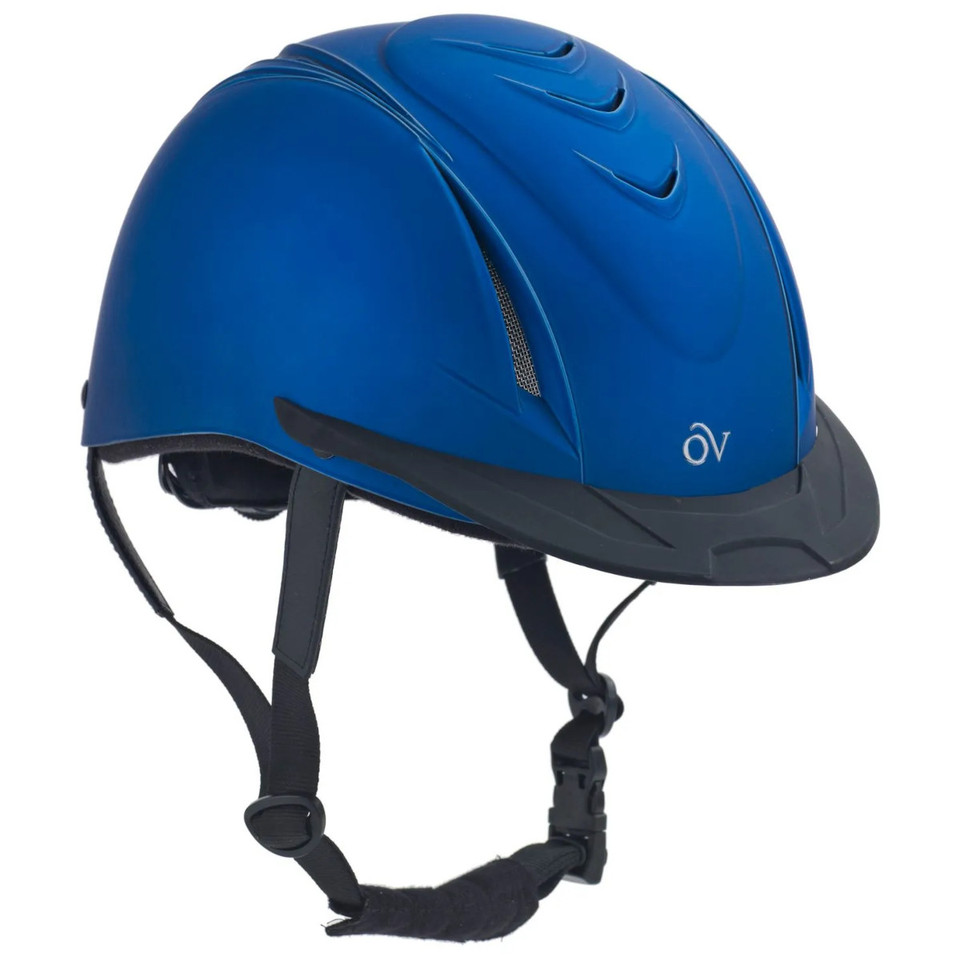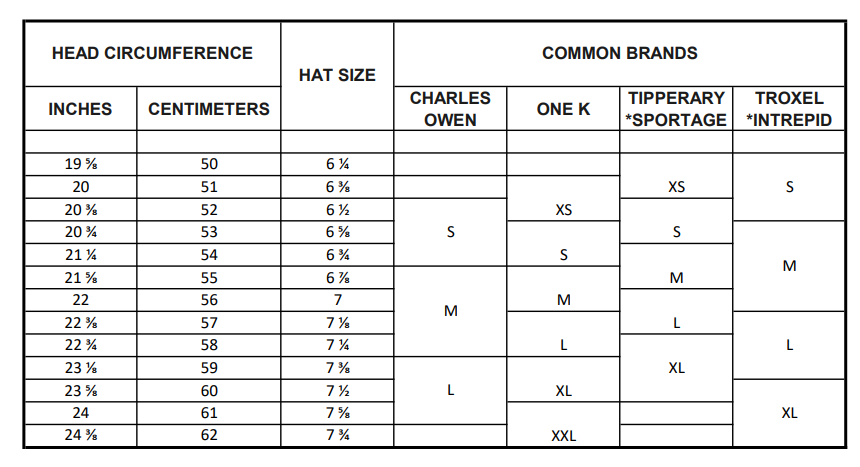
How to Measure Your Head for a Riding Helmet
Posted by Millbrook Tack on 12th Jan 2024
When it comes to horseback riding, safety should always be a top priority. One essential piece of protective gear is a riding helmet. Ensuring that you have the right-sized helmet is crucial for optimal safety and comfort. In this guide, you’ll learn how to measure your head for a riding helmet so you can be sure you're getting the best fit.
Different Types of Riding Helmets
There are many different types of riding helmets available, and it can be overwhelming to choose if you’re just starting out. The key is to understand that different types of riding helmets will work better depending on your skill level and your favorite type of riding.
 For example, Dial Fit riding helmets are engineered with a user-friendly adjustment system that allows riders to customize the helmet's fit effortlessly and are great for beginner riders. Featuring a dial mechanism at the back of the helmet, users can easily tighten or loosen the fit to achieve optimal comfort and security. This innovative design ensures a snug and personalized fit, catering to various head shapes and sizes. The Ovation Metallic Schooler Helmet (pictured to the left) is a great option with a dial fit system. These helmets tend to not work as well for experienced riders who compete in jumping, though, and they might prefer a helmet specific for that type of riding. Be sure to research which helmets might best suit your preferences.
For example, Dial Fit riding helmets are engineered with a user-friendly adjustment system that allows riders to customize the helmet's fit effortlessly and are great for beginner riders. Featuring a dial mechanism at the back of the helmet, users can easily tighten or loosen the fit to achieve optimal comfort and security. This innovative design ensures a snug and personalized fit, catering to various head shapes and sizes. The Ovation Metallic Schooler Helmet (pictured to the left) is a great option with a dial fit system. These helmets tend to not work as well for experienced riders who compete in jumping, though, and they might prefer a helmet specific for that type of riding. Be sure to research which helmets might best suit your preferences.
When selecting a riding helmet to match your riding preferences, safety should be the number one consideration, and that’s why new advancements and innovations in riding helmets prioritize this. One such advancement, Multi-directional Impact Protection System (Mips®) is designed to reduce rotational forces during an impact, providing an extra layer of protection against potential head injuries. In the context of equestrian activities, where falls and accidents can occur, Mips® technology helps mitigate the rotational motion that can lead to brain injuries. Equestrians can ride with greater confidence buying a helmet with Mips® technology, like the One K CSS with MIPS Riding Helmet.
Understanding Riding Helmet Sizes
Before diving into the measurement process, it's essential to understand how helmet sizes work. Riding helmets come in various sizes, typically ranging from extra small to extra large. Each size corresponds to a specific range of head circumference measurements. To find the perfect fit, you'll need to measure your head accurately.
When you measure your head, we recommend wearing your hair in the same style you would when riding. If your hair is thicker, and you normally tuck it into your helmet using a hairnet, you may need a larger helmet versus if you were to measure your head with your hair down.
Steps to Measure Head for Helmet
- Gather Your Tools: Start by gathering a soft measuring tape and a mirror. Make sure the measuring tape is flexible and can easily wrap around your head.
- Locate the Widest Part of Your Head: Find the widest part of your head, which is usually about an inch above your eyebrows. This is the area where the helmet will sit.
- Wrap the Measuring Tape: Take the measuring tape and wrap it around your head, ensuring it sits parallel to the floor. Keep the tape snug but not too tight. It's crucial to measure in centimeters for accuracy.
- Take the Measurement: Record the measurement where the tape meets, making sure it’s comfortable. If you're unsure, measure a few times to ensure consistency.
Choosing the Right Helmet Size
Now that you have your head measurement, you can use a helmet size chart to determine what size helmet you need. Different brands may have slightly different sizing, so be sure to look up the size chart for the specific brand and type of helmet you're interested in. Below is an example size chart that includes sizing for some of the most popular helmet brands.

Keep in mind some helmets may run small or large, and some helmets are designed for rounder heads, while others are better suited for oval shapes. If you’re in between sizes, round up to the larger size.
Trying on Riding Helmets
When trying on a riding helmet, make sure it fits snugly but comfortably. Perform a few head movements, including nodding and shaking, to ensure that the helmet stays securely in place. The helmet shouldn't wobble around on your head, and it shouldn't sit too low or high. The helmet should cover your forehead without obstructing your vision or being too tight on your ears. Adjust the harness system to fit snugly underneath your chin, with no more than two fingers' worth of space between the harness and your chin.
Investing in a properly fitting riding helmet is a crucial step in ensuring your safety during horseback riding. By following these simple steps to measure your head accurately, you can confidently select the right-sized English riding helmet. Remember that safety always comes first, and a well-fitted helmet is a key component in enjoying a secure and enjoyable riding experience.
If you’re still unsure what helmet size or brand will fit you best, visit the experts at Millbrook Tack’s store in Grand Rapids, Michigan. Our team can help measure your head and recommend the best English riding helmet for your needs, and share some of our favorite options, like the Kask Star Lady Chrome Riding Helmet.

